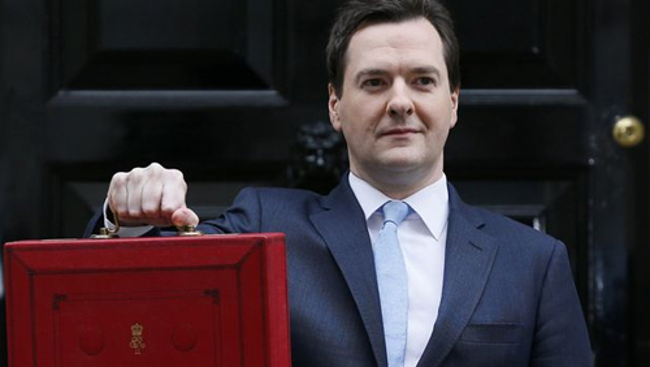In the wake of Labour’s humiliating summer it is tempting to think that the Tories have returned as the natural party of government, and are set to dominate politics for at least the next decade.
Few have profited from this perception more than the chancellor George Osborne, credited as one of the chief architects of the surprise Conservative general election victory, as well as the party’s success against New Labour more generally.
That in mind it is strange that reading The Austerity Chancellor, a biography of Osbo published back in late 2012, emphasises the continual weakness of the Tories, rather than the strengths.
One might find this obvious given the time of publication. In March of that year the chancellor’s career hit a low point as he delivered his “omnishambles” budget, which contained many minor but unpopular tax changes.
But it is the decision of Janan Ganesh, a Financial Times columnist, to fixate on the Tories’ thirteen years in the wilderness rather than its alleged subject that hits home how mild the success of Osborne and Tory leader David Cameron’s modernising project has been.
Whilst Labour’s wilderness years were resolved in the landslide election of Tony Blair in 1997, in which the party claimed 418 seats, Cameron’s Conservatives limped into coalition in 2010, before grabbing 311 seats earlier this year in what everyone expected to be a hung parliament.
This is despite Osbo’s long wilderness years spend studying the enemy and preparing to supplant them, the result of which was an only partially successful detoxification scheme now being upset by ill-advised tax credit cuts.
The Tories’ seemingly impregnable position, which is often remarked upon in the columns of the well-connected Ganesh, only appears so because of the disarray that Labour found itself in under the flimsy Ed Miliband and now the doctrinaire Jeremy Corbyn.
Gideon, to use the posher birth name of Osborne, may have sidelined the more reactionary elements of the Conservative party pandered to by the likes of Tory leaders William Hague and Iain Duncan Smith, but the Cameron government is tolerated rather than liked.
What is more the Greens, Scottish Nationalists and Ukip, which took more than a fifth of the popular vote between them, seem to have made the two-and-a-half party system that Blair enjoyed a relic, and such unquestioned rule in the Commons less likely.
For all of Ganesh’s often fawning prose one cannot help but look at Osborne’s career from 2015 – with much talk of the chancellor moving next door to 10 Downing Street once Cameron abdicates – and wonder of the direction of the rest of Tory modernisation project.
Leaving aside the prospects of Britain’s exit from the EU, which would define and doom Osborne and Cameron’s partnership, or the breakup of the United Kingdom due to pressure from the SNP, the Tories might well spend the next decade clinging to the edge of power whilst appearing dominant.
And whilst Ganesh’s biography reveals little of the personal life of Gideon, its cataloguing of the machinations of Westminster at the turn of the millennium would be well worth extending to the final act of Osbo’s parliamentary career – and perhaps the last years of majority government in Britain.
Image Credit – George Osborne, Trade Mission, January 2014 by Lee Davy
